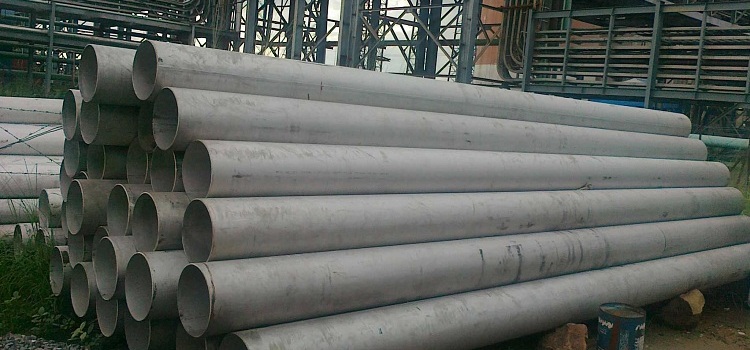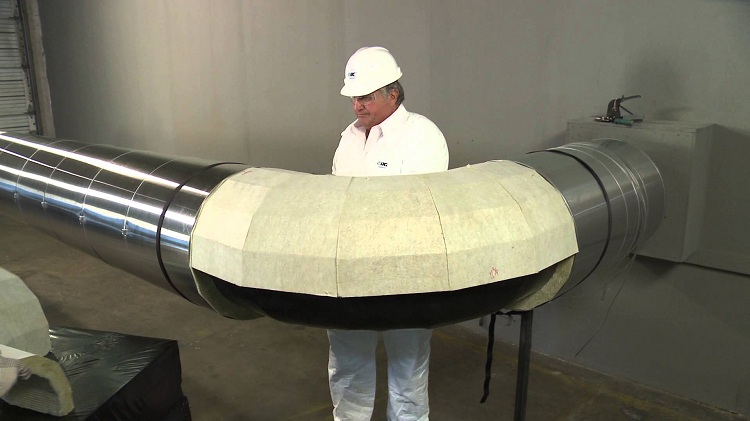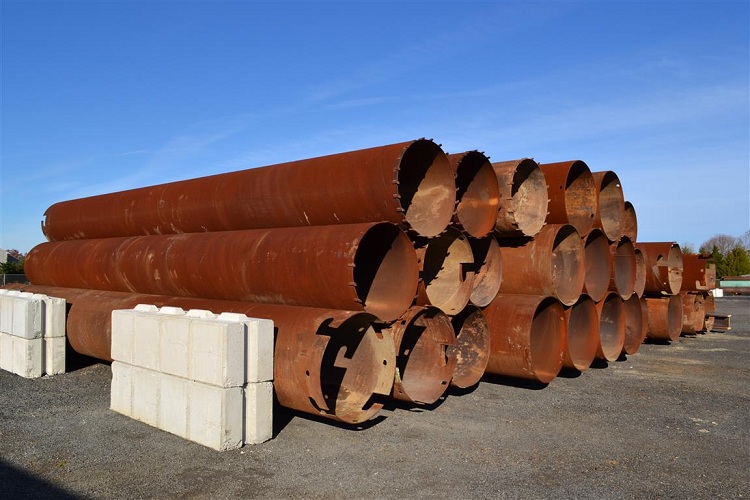
Pipe area. How to calculate the surface area and cross section of a pipe
Pipe area is a concept, which is used when calculating three different parameters of the product - the outer surface, inner surface and cross section. When making calculations, associated with the intersection, in some cases it is necessary to deal with the so-called living section. Having calculated the area, it is possible to determine the amount of required materials and the level of costs, necessary for laying and full operation of the pipeline.

Calculation of such an indicator, as the area of the pipe, may be required during the construction of the pipeline, as well as its insulation, painting and other activities
What are the parameters of pipeline operation related to the calculation of the area of the pipe
At the stage of designing a pipeline system, competent calculations of the area of the pipe can achieve important benefits, associated with different sides of the gasket, operation and maintenance. In particular, they, how to calculate the area of the pipe, will be associated with:
- patency of the pipeline system. You will need to count, based on the values of the outer diameter and wall thickness, the area of the inner cross section of the pipe. This will clarify the cost of the transported working environment, as well as the cost of the building as a whole;
- heat loss, occurring during transportation from the generating source (heating station) to heaters. To calculate heat loss, it is necessary to operate with values of diameter and length of pipes. Having an idea of the heat transfer surface area and knowing, how much heat is produced by the heating station, calculate the number and dimensions of heaters in the system;
- thermodynamic parameters of the system, be it underfloor heating, heating system register or pipeline section;
- the amount of materials for insulation, calculated, starting from the area of the outer surface;
- the amount of materials for anti-corrosion coating;
- roughness of the inner surface, which affects the speed of movement of the working medium. The latter, in turn, depends on the values of the geometric parameters of the pipe.

Knowing the area of the pipes, it is easy to determine the amount of materials to insulate the system
How to calculate the surface area of a pipe
A formula can be used to perform calculations, memorable from a school textbook, and calculator capabilities, as usual, and online.
A formula will be needed to determine the area of the outer surface of the round pipe, which is used in calculations, made with a cylinder: S =? d l. For, to decide, example, with the required amount of paint or thermal insulation materials, you need to know the values of such parameters, as:
- l is the length of the product, which will be subjected to appropriate processing;
- d - outer diameter;
- S - area, which will be determined as a result of calculations.
Value? we take, as approximately equal to 3,14.
pay attention! Working with paints and varnishes, focus on the manufacturer's estimated cost per square meter.
Thermal insulation requires additional calculations and costs, as it should be taken into account:
- the thickness of the insulating layer;
- presence of overlays of cloths, mandatory when laying mineral wool.
When performing calculations on the inner surface, especially hydrodynamic, we must not forget about some important points:
- with increasing diameter and length of the pipeline hydraulic resistance of the working medium can be neglected due to the reduction of hydraulic friction against the walls;
- the value of the hydraulic resistance largely depends on the roughness factor, than from the size of the surface;
- the use of non-galvanized steel as a material for the pipeline leads over time to reduce the internal cross section and increase the hydraulic resistance, as inside there is a layering of rust and mineral deposits.

When calculating the area of a round pipe, the diameter and thickness of the walls are taken into account
The inner surface of the round pipe is calculated by the formula: S =? (D — 2n) l, operating values:
- ? - Approximately 3,14;
- d - outer diameter;
- n - wall thickness;
- l - the length of the site.
How to calculate the cross section of the pipe
There is a nuance here, related to the type of pipeline used - pressure or non-pressure. In the case of a pressure pipeline, the calculation is much simpler and will require the involvement of the formula S =? r2. That is, to calculate the area (S) cross section of the pressure pipeline, in what environment, transported occupies the entire internal volume, values are used:? - Approximately 3,14; r is the radius, equal to half the inner diameter or half the outer diameter minus twice the wall thickness.
It is more difficult to deal with similar calculations, if you have to deal with self-flowing sewerage or water supply. In such systems, in contrast to the pressure, during almost the entire period of operation, only part of the walls is disturbed by the flow of the working medium, and not the entire internal volume. So, the value of hydraulic resistance is significantly lower.
On a side note! When performing hydraulic calculations, it is customary to operate with the concept of living section. Under it understand a part of section, relating directly to the flow of the working environment, which is located perpendicular to it.
What shall I do, dealing with the pipe, square in cross section? To calculate the area of a square or rectangular pipe, you can use an online calculator or use the formula S = Pl. In her, in addition to the size of the area (S) and length (l), the value of the perimeter of the perpendicular section is also used (P).
With all the simplicity of calculating the area of the pipe, to show negligence in performing this operation is hardly worth it. Mistakes can result in overuse of materials and money, and violations in the operation of the pipeline system.


